#bioregionalism
Text
Solarpunk Art 2023 (BIOREGIONS)
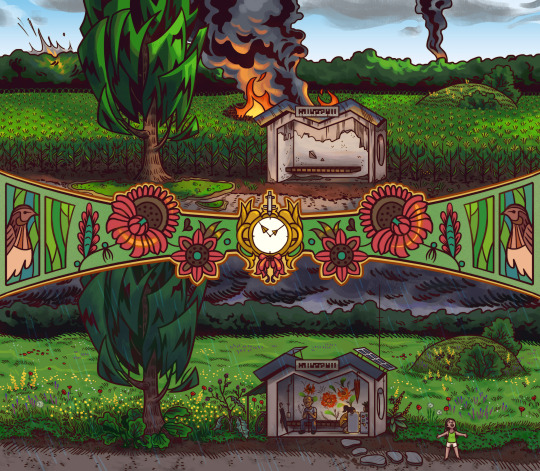
Temperate Grassland in Ukraine by @the.lemonaut.
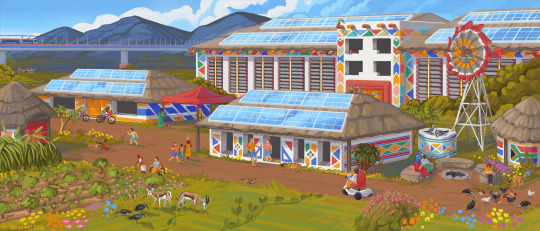
Desert/Xeric Shrublands in South Africa by @draakart
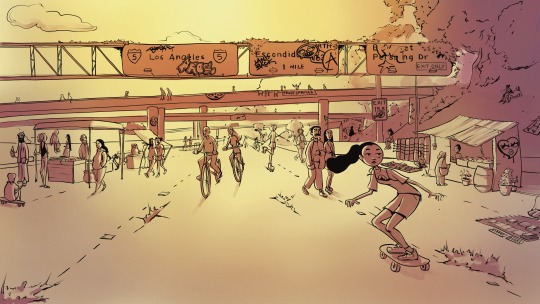
Mediterranean Forests/Scrubs in Southern California, USA by @helentadesseart
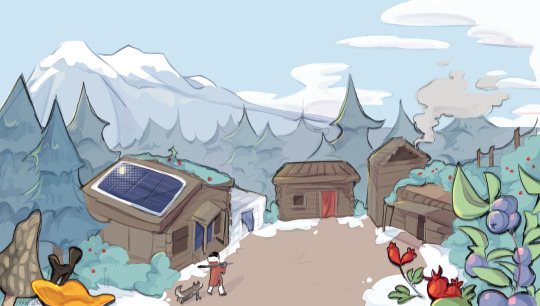
Boreal Forest by @_frandszk.

Mediterranean Forest/Scrubs in Tijuana, Mexico by Limonarte
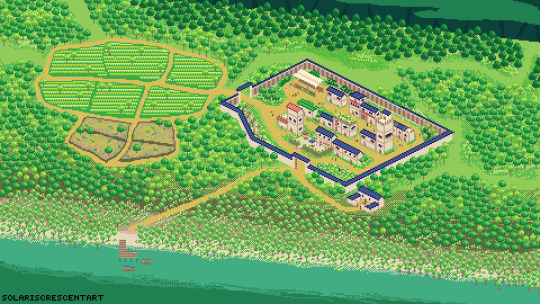
Subtropical Evergreen Forests in South China & Vietnam by @solariscrescentart

Tropical & Subtropical Moist Broadleaf Forests in the Philippines by @lacan.lacapat

Temperate Broadleaf & Mixed Forests in the Ozark Highlands of the USA by Xiantifa

Temperate Broadleaf & Mixed Forests by Arikadough
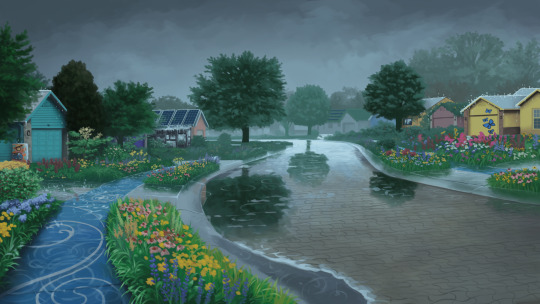
Temperate Broadleaf & Mixed Forests in Indiana, USA by Toby Raab
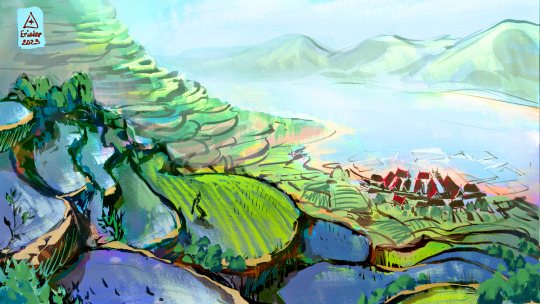
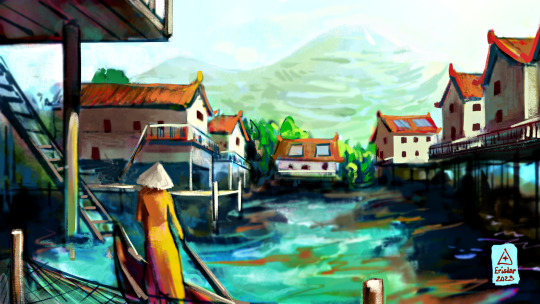
Subtropical Evergreen Forests in South East Asia by @erisdar_art
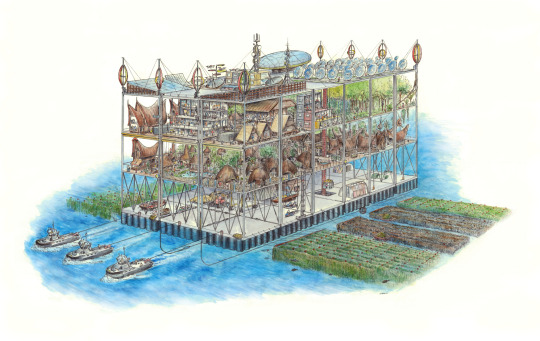


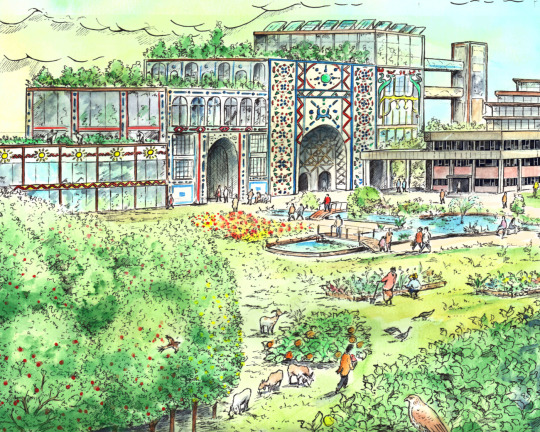

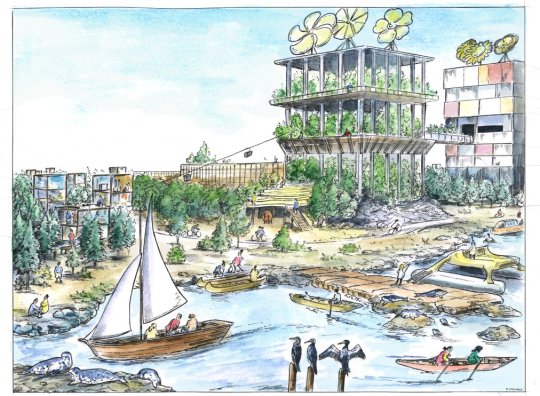
Various Bioregions by Dustin Jacobus (@solarpunkart)
700 notes
·
View notes
Text
Where You At - old quiz from 1981
Here is an old quiz from 1981 on appeared on Coevolution Quarterly, surveying one's knowledge of the place he/she lives. It was quoted by the book Bioregional Imagination: Literature, Ecology, and Place.
Bioregionalism pays attention to how one is connected to the local ecosystem and how the exploitation and damage that has been made can be repaired with changed way of inhabitation.
Where You At? A Bioregional Quiz
Developed by Leonard Charles, Jim Dodge, Lynn Milliman, and Victoria Stockley.
Coevolution Quarterly 32 (Winter 1981):
Trace the water you drink from precipiation to tap.
How many days til the moon is full? (Slack of 2 days allowed.)
What soil series are you standing on?
What was the total rainfall in your area last year (July-June)? (Slack: 1 inch for every 20 inches.)
When was the last time a fire burned in your area?
What were the primary subsistence techniques of the culture that lived in your area before you?
Name 5 edible plants in your region and their season(s) of availability.
From what direction do winter storms generally come in your region?
Where does your garbage go?
How long is the growing season where you live?
On what day of the year are the shadows the shortest where you live?
When do the deer rut in your region, and when are the young born?
Name five grasses in your area. Are any of them native?
Name five resident and five migratory birds in your area.
What is the land use history of where you live?
What primary ecological event/process influenced the land form where you live? (Bonus special: what's the evidence?)
What species have become extinct in your area?
What are the major plant associations in your region?
From where you're reading this, point north.
What spring wildflower is consistently among the first to bloom where you live?
Scoring
0-3 You have your head up your ***
4-7 It's hard to be in two places at once when you're not anywhere at all.
8-12 A firm grasp of the obvious.
13-16 You're paying attention.
17-19 You know where you're at.
20 You not only know where you're at, you know where it's at.
So where you are really?
2 notes
·
View notes
Text

0 notes
Text

#Global Crisis#Post-growth#post-capitalism#post-collapse#Existential Risks#Economic Growth#Ecological Footprint#Sustainable Development#Traditional Renewable Energy#Eco-villages#Permaculture#Commons & commoning#Bioregionalism
0 notes
Text
Fantasy of a living future
By Starhawk
You are walking the dogs up on the hill they call La Matria, the Mother’s Womb.
Below is spread a sparkling panorama of the city, a living tapestry of rainbow colors on a warp of green. Toward the west, the Maiden’s Breasts thrust their twin peaks up into a clear sky. All during Sunreturn Moon, fireworks lit the sky there, celebrating La Purisima, the festival of the conception of the Virgin. The streets were filled with processions, the Catholics and the Pagans dancing together without arguing about which Virgin they were celebrating, and everyone else in the city, it seemed, joining in just for the fun of it.
Now it is Fruit Blossom Moon, no fog, and the winter rains have turned the hillside green, dotted with the orange of a few early poppies. Three cows graze the hillside; the dogs are used to them and ignore them. You smile a greeting at the young girl who watches them; she is sprawled on her back in the sun, not working too hard. The cows are the project of the kids from your own child’s school; the neighborhood market collective buys their milk and cream, and with the money and their own labor, they are constructing what you believe must be the world’s most elaborate skateboard run.
Atop the hill stands a circle of stones. You pause for a moment, feeling the energy of the city, the hill, the sky all converge here, remembering the bonfires and the dancing and the rituals. On the Jewish New Year, they blow the shofar, the ancient ram’s horn, here. On the Winter Solstice, you climb this hill at dawn to welcome the newborn sun.
To the east stretches the bay. The air is so clear today that you can see all the way to Coyote Mountain in the distant hills. Great flocks of pelicans and seabirds wheel and dive around the fleets of fishing boats, their bright-colored sails plumped out by the breeze. Among them sail the great ocean-going trade ships, their huge sails spread like wings. No need today to switch to the solar batteries; the wind is strong.
You call the dogs and head down the winding, processional way, reveling in the scent of the blossoms from the apple trees that line the walkway. You glance into the gardens of the houses on the hill; it would be a great day to double-dig your tomato bed and plant out the seedlings. The dogs run ahead as you follow the road down, past the park at the bottom of the hill. Sidewalk cafes line the park; you spend pleasant hours there watching the kids play on the slides and swings, taking your turn, as do most of the neighborhood adults, on playground watch.
Now the walkway narrows as you turn down your street. On your left are the front gardens of the old Victorian houses. On your right, a low greenhouse structure lines the roadbed where trolley cars and electric autos run on the one-way street. The greenhouse is the neighborhood waste treatment plant, where banked rows of water hyacinths are aquacultured to purify wastes and generate clean water and compost.
You pass another small park, where a group of older people sit conversing under walnut and almond trees. Like everyone else on the street, they are a mix of races. Africa, Asia, the Americas, Europe, all contribute to their heritage, and you smile with pleasure, for to see a group of elders who embody the Four Quarters is considered extremely good fortune. “Blessed be the elders; blessed be the Four quarters that complete the circle,” you murmur as you pass.
There are several elders’ houses on the block: equipped with elevators and intercoms, the older people can live independently in a suite of rooms with someone always on call; some take turns cooking and baking, some pool together and hire local teenagers to cook and clean. In your own house, each of you cook once every two weeks. Once a week, you eat out at friends’ or go to restaurants. On another night, you go to the neighborhood dining club, where, for a fixed membership fee, a collective provides a good organic meal. The dining club is a place to meet, talk, socialize, do informal business, and talk politics.
The fruit trees that line the sidewalks are very old now, planted years ago as an attempt to provide free food for the hungry. Now, of course, no one goes hungry. The very thought is barbaric, amidst all this abundance. No one lacks shelter, or care when sick, or a chance to contribute to the work that sustains abundance.
You open the door to your collective house. The dogs run in. Your computer sings to you: someone has left you a message. One of your housemates calls to you to tell you the news.
“The ship’s in! The Chocolate Consortium called—they want everyone who can to come down there and help unload.”
All thoughts of gardening disappear. You hop on your bicycle and speed down the path that winds past houses, shops, and parks to the docks.
The ship is in from Central America: one of the great winged traders, carrying your long-awaited shipment of cocoa beans and cane sugar. You greet your co-workers from the Truffle Collective and say hello to your friends from the other collectives in the consortium: the Candymakers, the Bakers, the representative from the Ice Cream Consoritium, the Chocolate Chip Cooperative. Together, you unload the heavy sacks, count the inventory, and examine their other wares: the finely crafted hammocks, the innovations in intelligent crystal technology in which Central America leads the way. The ship will return laden with fine Sonoma wines, precision tools from the East Bay foundries, | artichokes from Santa Cruz, and, of course, a load of state-of- the-art skateboards from the City.
You have arranged this deal yourself and | it has been a complicated one. Your work collective is part of an extensive tradeweb, involving the households of your members, your sister collectives in the Delta grain-growing region and the Wine Country, your lover, who works in an East Bay steel mill, where the worker cooperatives pride themselves on producing the finest alloys in the cleanest, safest plants in the country, your ex-lover, who is a computer genius, and your housemate’s brother, who repairs and maintains ships. You can resort to currency if you need to: the City’s money is good anywhere, but you prefer to trade when you can. Fortunately, with a few exceptions, everybody loves truffles. The Tofu and Tempeh Consortium won’t touch sugar products, but many of the soybean growers have voracious sweet tooths, so it all works out.
The work is hard but you enjoy the physical labor as you all talk and joke together. It’s a nice change from the candy kitchen and the computer terminal. The smells and the staccato sound of Spanish remind you of the winter you spent visiting the Cooperativa de Cacao, where the beans come from. You remember the lush fields of corn and vegetables, the sturdy children, the trees you helped plant to hold the slopes of the mountain, the doorways open to the mild nights and the people calling out as you took an evening stroll. The visit cemented the friendships that established your trade contacts.
Finally, the whole shipment is packed away on electro trucks that will take it back to the factory. The captain invites you and your friends up to her cabin for a cold drink. After you ritually exchange compliments and computer software, you invite her and her companeros to spend the evening with you. The moon will be full tonight; your ritual circle will meet up on the hill and guests will be welcome. You will dance to the moon and then head downtown, for it is Chinese New Year and the dragon will dance through the streets. There will be fireworks, parades, and celebrations.
You bicycle home. In the last hour of daylight, you have time to pull a few weeds and turn the compost. Your household, like most of the city’s living groups, grows much of its own food, providing all its salad greens, most vegetables, many fruits, nuts, and herbs. Your housemate feeds the chickens and milks your goat. You can shower, soak your sore muscles in the hot tub, chat with your child, and relax before dressing for the celebration. It’s been a long day—but a good one. Now for some good food, and you’ll be ready to dance all night in the friendly streets aglow with moonlight.
Originally published in Home! A Bioregionalism Reader
#fantasy of a living future#ecotopia#utopia#solarpunk#starhawk#bioregionalism#hopeful future#hope#anarchism#speculative fiction#the language is soooooo stilted and uninspiring and boring but as a historical document this is notable i guess#cascadia underground
0 notes
Text
cannot recommend enough just walking around your neighbourhood, noticing the plants, trees, birds, creepy-crawlies, mammals, rocks, watercourses, etc that are around you. looking them up and learning about them, how they behave, their seasonal rhythms and changes. learning about their presence in folklore and mythology and culture.
these are your neighbours. if you take a few minutes to learn about them, if you make the small effort to notice them, be mindful of them on a regular basis, honour them and respect them - this is animism. this is re-enchantment.
we all live alongside and in community with a myriad of spirits. it is truly so beautiful and life-affirming and sacred to appreciate that and the unique character of your neighbour-spirits.
#animism#polytheism#spirit work#bioregional animism#some of my most beloved neighbours are the fox#the silver birch#the rowan#the cyclamen#the jackdaw and magpie#the green parakeet#the wren#the blackbird
713 notes
·
View notes
Text
Swamp Witch Travels: Finding Sacred Space
Myakka River and Paynes Creek State Parks

As I dive deeper into my practice of bioregional animism, I look to parks for sacred space and places to connect with spirits of all kinds. In Florida we live in cities divided by nature preserves and swamps, and we are also incredibly blessed to have an amazing State Parks system. These parks offer us peaks into ecology and history of the Land that reveal to us some of Its Mysteries. Here are a few things I’ve learned as a Folk Witch.
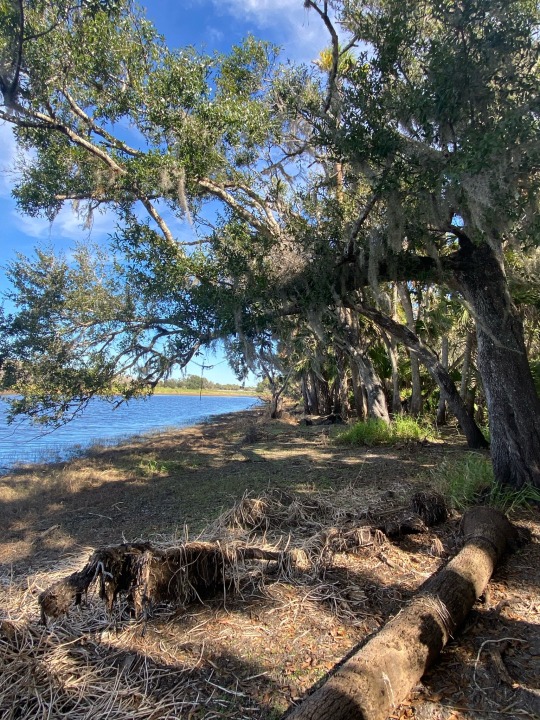
Make an offering when entering. For ancestral reasons, I use tobacco. Use what you're guided to. Introduce yourself, your intentions, etc. Also, pick up trash and be respectful. Don't wander in places you don't know, or take things you don't have knowledge on. It’s usually best to practice Leave No Trace but when have Witches been known to follow rules… Do as ye will. But always ask and give something in return.
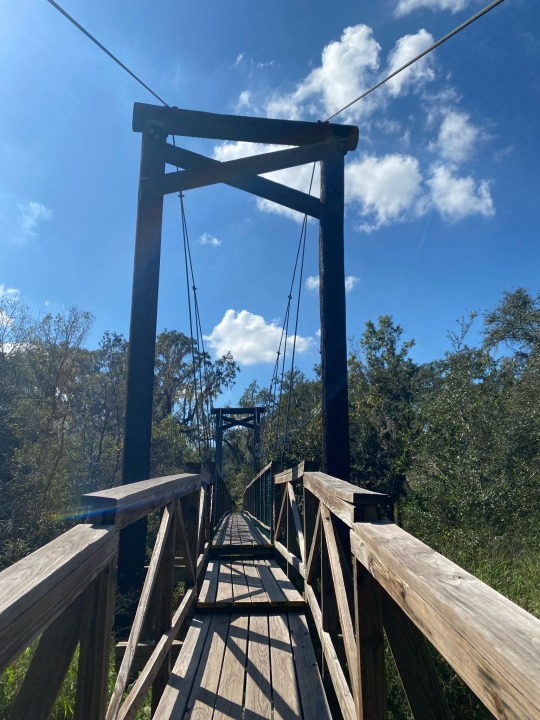
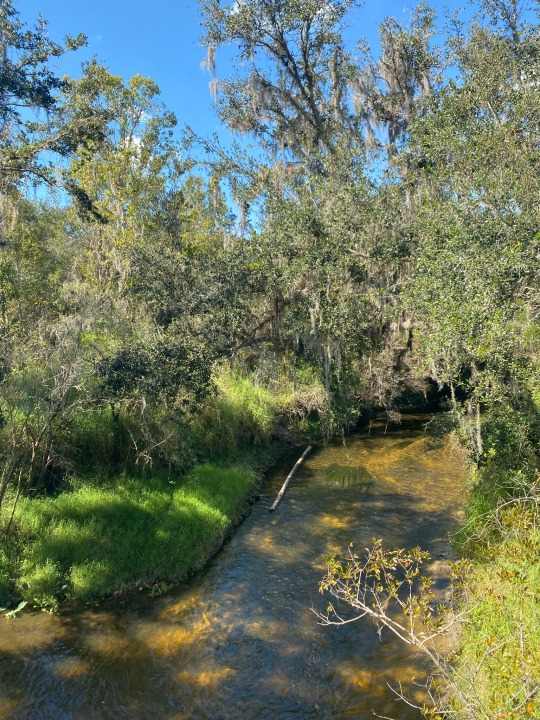
There are different spirits!
Trees, plants, rivers, hills and even entire forests and parks can have their own spirits. At parks like Myakka and Payne’s Creek, there are platforms you can climb for an aerial view of the park. This is a great place to connect with the Genus Loci of a place! (For more on Genus Loci, I recommend Folk Witchcraft by Roger J Horne) Some spirits will want to talk to you, some won’t. Respect their choices and don’t expect anyone to talk for free.

Protection is Key!
Protection is important for witches and animists. Many spirits and natural places are dangerous, for example some Rivers are known for drowning and can be seen as having a harsh and dangerous spirit. When protecting myself day to day I wear spiritual jewelry from my Cuban traditions. Shark and gator teeth serve as great protection from water spirits and in general. My spiral shell ring is protective and I often use it in ritual. Bodies of water are also great places to bless things and hold rituals of cleansing and power! Not only spiritual protection, but physical protection is needed as well. In these swamps, we have gators, sharks, panthers, bobcats, bears, snakes, PEOPLE and even more things that would gladly expedite your role in the food chain. I’m not saying be afraid of animals, rather have respect and recognize you are in their domain. Carry bear spray, don’t wander too far off known trails, and be careful of other people.
I once heard a saying, the Swamp knows everything about death, and doesn’t consider it a tragedy.
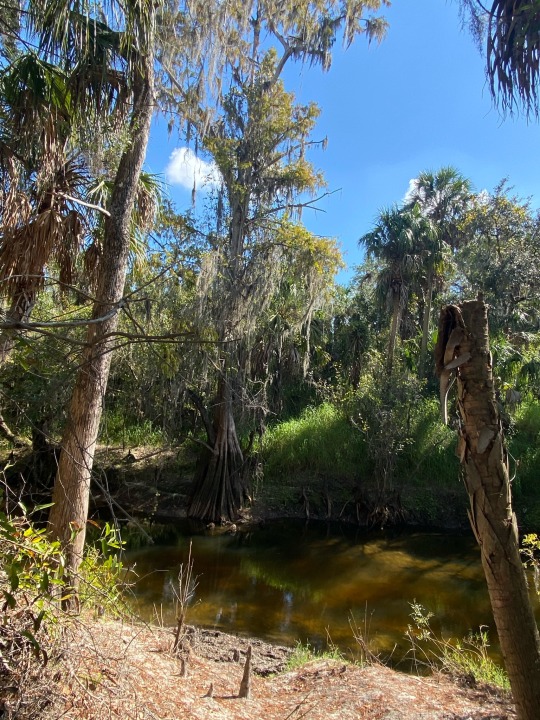
Enjoy the Scenery, and Learn!
Take it all in and take your time! If you need to escape heat and mosquitos check out the visitor centers and gift shops! I justify spending a bit too much here on considering it an offering to the Land. Try talking to the people who work here or making friends! This is a great way to learn Folklore and secret places to explore.

On Remembering Ancestors of the Land
In working with the Land, you must honor the Ancestors of the Land. These are the spirits of all the people who lived on the Land before you. For me, this begins with my Ancestors and the other Indigenous groups of the area. In Florida, the tribes who remain today are the Seminole and Mikasuki. We should look to Indigenous tribes for wisdom on how to approach and respect the Land, but that doesn’t mean read online about it and go appropriate it. It means go and actually talk to real life people. You can and certainly should also honor other people, including any folk saints or historical figures who may serve as tutelary spirits or otherwise.

And always remember to say Fuck the Colonizers!
Happy Witching Friends, May the Dry Season bring us all Renewal!
#witchcraft#florida#bruja#brujeria#witch#bioregional animism#florida witch#santeria#swamp witch#traditional witchcraft#espiritismo#taino#taino spirituality#atabey#folk magic#folkloric witch#folk witchcraft#folk witch
103 notes
·
View notes
Text

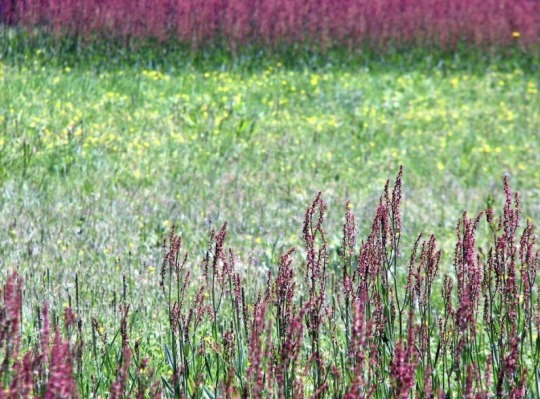

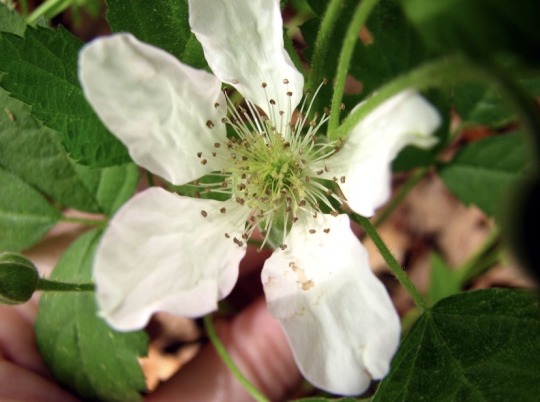



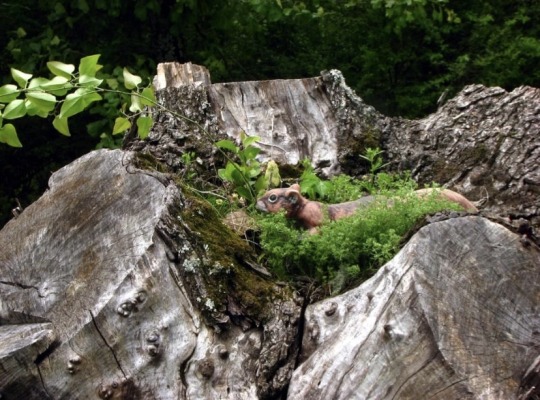

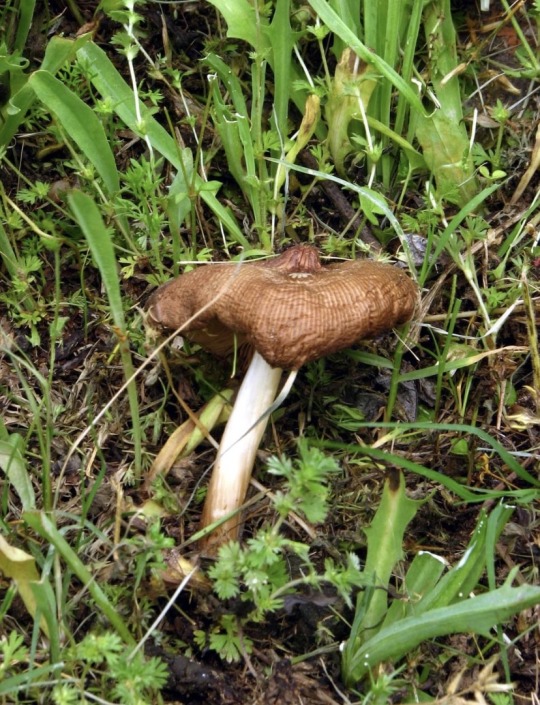
Late April
#Arkansas River Valley#ozark foothills#vines#April#Arkansas#sheep’s sorrel#star of bethlehem#blackberry#lamb succory#beaked cornsalad#mushroom#bioregional animism
8 notes
·
View notes
Text
Meet a Plant, Know A Plant

Thanks to a link from @liminalblessings, I now have the last of the tools I need to start compiling my own bioregional herbal Materia Medica. I'm honestly tired of herbalism guides focusing mostly on European import plants. They're fine, but they're everywhere, and part of my practice is bonding with the plants I see every day.
This information comes from the traditional ecological knowledge of the Native peoples whose land I occupy. I am beyond grateful to the knowledge-keepers who have preserved this information despite all odds and shared it with anthropologists and researchers.
So now, when I meet a plant, I'm going to get to know a plant. I am lucky enough to have access to some of the primary sources thanks to my job, so this information may update as I can get ahold of more details and sources. Notion page links will be included.

As always, this is not encouragement to try these uses at home. Herbalism requires training, complex medical knowledge, and careful implementation by a specialist. Just because it's "natural" doesn't mean it's safe. This is purely for my own knowledge and understanding how people view the plants on their landscape.
14 notes
·
View notes
Text
Blorbo ask game!
Template: X
Pick your favorite blorbo and answer the questions below, then pass it on. Just a little fun and games here and/or can be used for character building:
The blorbo this time is Figwit (Maenod / Melpomaen). He's bad at picking favorites so prepare for non answers.
What is your blorbo’s:
1. Favorite season?
The summer. He finds the winter beautiful but he stands up to heat better than the cold.
2. Favorite Food?
He's fond of sweet things, cakes and fruit chief among them. I think his favorite fruit is blackberry.
3. Favorite plant or herb?
He's got a list.
The entire viola genus. Violas, violets, pansies. They're all wonderful. The multicolored yellow and purple ones are his favorite.

Violas in Snow 22218-290 by Kathy Whipple Wong+
Dandelions and orchids remind him of his parents (Glorfindel and Erestor, respectively).
He's also fond of roses, lavender, and forget-me-nots.
4. Favorite person/being?
It's hard for him to pick one person. But in the timelines where he marries, probably whoever he marries.
5. Favorite place?
In general: libraries, gardens, and close to his loved ones.
Geographically: Imladris will always have a special place in his heart. He is absolutely enchanted by the Shire and skirts around Aragorn's ban on entry to it by outsiders by making Sam's acquaintance.
6. Favorite animal?
His horse. Additionally, any horse he ever has or will lay eyes on. Loves his horses. He's very anxious about their care when he goes abroad and prefers to tend to them himself.
He also likes butterflies and moths.
7. Favorite drink?
Dandelion tea.
8. Favorite hobby/activity?
He'd probably say something different each time you ask. Calligraphy, translation, transcription, reading, text restoration and preservation, and research are all things he does regularly both at request and for enjoyment. He also enjoys horseback riding and traveling with his friends or family.
9. Do they like to read? If so, favorite genre?
He loves to read. Texts on language and culture, especially if they're either ancient or very current, are his favorite.
10. Do they like to dance?
Yes.
11. What is their favorite room in the house?
Elrond's house: it's a toss up between his own and the library.
Glorfindel and Erestor's cottage: the main room
In most other places it's usually the library or archives or other equivalent.
12. Favorite place to travel to?
Fuck if he knows.
Lothlorien, for many years. However, when he travels somewhere new, it usually becomes his new favorite place to travel to for a while unless he's found himself there under spectacularly poor circumstances.
13. Who is their best friend?
Erestor is his closest family member and Lindir is his closest friend, though Lindir also operates as family to him.
14. Favorite bioregion?
Out of practicality, more temperate regions are easier for him to handle. Harsher ones are more of challenge but he still enjoys them.
15. Choose one for them: wine, beer, cider, hard liquor, or none?
Cider. As sweet and least alcoholic as possible.
Tagged by: @parma-formenorion Also, you're it, again.
Tagging: @elithilanor and anyone who's interested
#About Mel#headcanons#Maenod | Melpomaen | Figwit#Tolkien#Lord of the Rings#blorbo ask game#//i still know fuck all about bioregions
9 notes
·
View notes
Text
Working With the Wind
Things to do with a particularly windy day:
Pay attention to the direction of the wind. In some traditions, this carries further significance. This may either be a set of rules based on the cardinal directions or, as in my practice, based on local landscape. Winds coming down from the mountains are different than those blowing in from the prairies.
Do mundane research on wind. How is it formed? What causes it? How does it interact with plants and animals? When is it windiest where you live? How does this information affect your craft?
Capture the wind and save it for later. In folklore, sailors would tie favorable winds into knots and untie them later out at sea. It also works great in summertime when you just want a nice breeze.
Banish something in the wind. Take whatever you don’t want in your life and let the winds carry it far, far away. Let blessings and other work travel on the wind, they can also reach great distances with the help of the wind.
Connect with deities, especially those associated with storms, nature, and the element of air. Leave out an offering for wind spirits. Celebrate them the same way you might celebrate the spirits of the first snow or spirits of summertime.
In winter, winds are sometimes connected to the Wild Hunt and similar lore involving mass amounts of spirits riding in on the wind. Or perhaps you follow a tradition that holds that spirits are less likely to appear in the wind due to their nonphysical nature.
Lastly, if you need protection from a windstorm, try placing a knife in the earth with the blade facing into the wind. This is said to cut up a storm and prevent it from bringing harm.
Sources & Further Reading:
- The Crooked Path by Kelden
- Spirits Through Respiratory Passages, Eldar Heide
- GKOS
67 notes
·
View notes
Text

Mother Death has paid us a visit again, with one of our old hens passing away in the night. Accordingly, we took her body out into the forest, where we laid her to rest in the embrace of a Nurse Stump and showered her with Bleeding Heart Flowers—a bioregional plant we have found quite useful as a Ghost Corn for the spirits of the dead.
#hen#death#chthonic rituals#ghost corn#bleeding hearts#bioregional paganism#tw: dead animal#bone mother
26 notes
·
View notes
Text
Creating a Backyard Land Spirit Profile
Working with land spirits can help connect you with your local ecosystem, and for some practitioners is a crucial aspect of bioregional magic. Some folks, like myself, consider themselves to be initiated by one or more land spirits.
When I use the term land spirits, I am referring to a few different things. First are the collective spirits of various plants, animals, and insects present in a specific bioregion. An example of collective, in this context, means that if I'm petitioning help from the spirit of violets, I am working with the spirit of all violets present in that area rather than a singe flower that grows in my yard.
The next is the land guardian, which in my practice is a more powerful spirit with claim over a specific territory, like a forest, river, or neighborhood.
Sometimes these two concepts are separate and sometimes they're interchangeable. It all depends on personal practice, culture, local folklore, etc.
One thing that has been extremely beneficial to my practice has been creating a backyard land spirit profile. This method has been useful for spirit work and "green" magic, but more importantly, it's helped me immerse myself in my local ecosystem and I get to meet a lot of cool animals and plants.
Here is an over-simplfied example of my backyard land profile:
Ecosystem: Central Interior and Appalachian: Mixed woodlands, close to possible floodplains
Soil Type: Clay in garden bed, Loamy near/beneath shrubs, Sandy in sunny areas of the lawn
Flora:
Cultivated- Paradise Apple, Highbush Blueberry, Rose of Sharon, Dog Rose, Black-Eyed Susan, Sundial Lupine
Native - Bloodroot, Wild Strawberry, Common Violet, Wrinkle-Leaf Goldenrod, Blue Wood-Aster, Horseweed, Fireweed, Deer-Tongue Witchgrass, Common Milkweed
Invasive - Round-Leaved Bittersweet, Yellow Toadflax, Creeping Bellflower, Common Mugwort
Naturalized - Dandelion, Broad-Leaf Plantain, Deadly Nightshade
Notes - Various mosses, unidentified mushrooms growing on lawn and lichens found on some trees/shrubs.
Fauna:
Mammals - Raccoon, Opossum, Striped Skunk, Grey Squirrel, Chipmunk, Feral Cats, Deer mouse, House Mouse
Birds - Cardinals, Chickadees, Catbirds, American Robin, Downy Woodpecker, Turkey Vulture, Crow
Reptiles and Amphibians - N/A
Fish - N/A
Invertebrates - Dotted Wolf Spider, Leopard Slug, Tiger Bee Fly, Monarch Caterpillars, Peach Root Weevile, Narrow-Winged Mantis, Fireflies
Ecoregion and Soil Type
The first thing I did was determine what type of ecosystem my yard used to be. In an urban/suburban area this was a bit challenging.
I started by identifying a few wild plants and finding out where they usually grow. Most of them seemed to prefer shady woodlands and rich soil. There were also a couple of pioneer species present in the sunnier and more disturbed areas of the yard.
Next, I took a look at surrounding wild areas. We are close to a mountain and a large river. There are woodlands near and within the city made up of mostly hardwood and conifer trees. I knew from memory that certain areas close to my home are likely floodlands.
After that, I found a bioregion map of my country which showed that my state fell under the category of Central Interior and Appalachian. I searched this region on landscope.org and was able to determine my specific ecoregion (not shared here for privacy reasons).
From there I started making educated guesses. I determined that my backyard was likely a mixed hardwood and conifer woodland sitting very close to what might have been a floodplain.
For my soil type, I took samples from different areas of my yard and used an online guide to determine what kind of soil I had. Most of it was sandy or loamy, but my flower beds seemed to have some clay.
Using all this information, I had a general idea of what kind of plants and wildlife would be present without human intervention. It also helped with deciding which native plants to start growing.
Plants
Throughout the year, I went out to the yard with a wildlife field guide and a couple identification apps and identified every plant and insect I found. I grouped the plants into four categories: native, invasive, naturalized, and cultivated. This isn't shown in the example, but I also grouped them by season and the time of year they appear.
Naturalized refers to plants that have integrated themselves into the environment without inflicting damage to the local ecosystem.
You'll notice that under the cultivated section I included a few native plants. This is because those plants were introduced by me and would not be present without my intervention and I wanted to make that distinction.
The importance of native and naturalized plants is obvious, but what about cultivated and invasive? Keeping a profile of invasive plants helped me keep a record of which noxious weeds I need to remove. From an ecological perspective, their removal is crucial to the survival of my native plants and garden crops. From a spiritual perspective, this can be an offering or act of service to the local land spirits. Some of these plants, like Common Mugwort, are both valuable for workings and fine to harvest in large quantities since they are invasive.
Cultivated plants are also important. Many of these plants, like my Blueberries, Apples, and Rose of Sharon, were here before me. The importance of plants introduced by humans is greater than you'd think. First, they are usually crops and flowering plants and provide food for both humans and the local wildlife. Secondly, I live in an urban area, and my land spirits are likely very closely associated with people.
I researched all of my plants and took note of growth patterns, toxicity, medicinal uses, ediblity, native region/habitat, ecological significance/impact, etc. Then I moved onto folklore and symbolism and started working with the spirits of a few plants, performing divination, leaving offerings, harvesting them and including them in rituals and spellwork. I did this in groups to avoid feeling overwhelmed.
Please note that you should always properly identify plants and be aware of potential toxicity before harvesting, especially if you plan on burning or consuming said plant. Also steer clear of protected or threatened plants and keep harvest to a minimum even for abundant native species.
Wildlife
My next project was writing down every species of animal and insect that I had encountered in my yard. I grouped them into several categories: mammals, birds, reptiles, amphibians, fish, and invertebrates. In real life my invertebrates section is separated into several subcategories (orb weavers, beetles, etc.).
Next, I used basically the same system I did for plants, researching their native range, preferred habitat, behavior, diet, ecological importance. Then I started looking into folklore.
Finally, I started integrating them into my practice and working with their collective spirits. This involved using animal symbolism in rituals, leaving offerings, and performing a lot of divination.
Remember to never interact with or directly feed wildlife. If I'm making offerings outdoors it is usually fresh water, scattered birdseed, and acts of service like creating habitats and growing plants that a specific species enjoys. If scattering birdseed, do so in the morning to keep too many animals, like raccoons, from entering your yard at night.
Side note: Keep a record of what appears in your yard each year! For example one year we had several chipmunks and one year I saw none. One year we had no fireflies and the next our backyard was covered in them.
Tying It All Together
Once I had my backyard profile completed, I started working with the collective spirits of select species. I have an offering schedule, perform communication, and petition these spirits regularly in spellwork. I use certain plants that I harvest for offerings and use for tinctures, infusions, cooking, and crafts. I use symbols of local animals in crafts and spellwork.
After working with the "smaller" spirits, you can start seeking out specific land guardians by using a combination of divination and research of local history and folklore.
On a mundane level, I am now able to cultivate an appropriate ecosystem for the local wildlife and start projects to support it. Examples of this are pollinator gardens, stick and brush piles for fireflies and small animals, growing seed-rich and fruiting plants for birds and mammals, winter shelters and TNR plans for feral cats, and more.
I also like to take notes on plants and wildlife that I encounter in my general area that don't usually make it into my backyard. For example there have been coyotes, foxes, bobcats, and black bears spotted in my neighborhood.
I want to stress that I live in a semi-urban and relatively populated neighborhood and I have a small yard. The brief example of of my land profile doesn't cover even a fraction of the wildlife I have encountered in my backyard. There is so much life in urban and suburban areas in need of our support.
#bioregional magic#spirit work#green witchcraft#land spirits#witchcraft#plant magic#local witchcraft
4 notes
·
View notes
Text
New post on my longform blog about Doggerland, the lost land that now lies beneath the North Sea, and where I situate the realm of the Dead in my personal, localised practice. I talk about why I've been fascinated by Doggerland and the ancient Ancestors who lived there, and the impact it has on my heathenry.
Hail to gentle Helle, and hail to the Ancestors!
#heathenry#polytheism#ancestor veneration#bioregional animism#paganism#devotional polytheism#personal
55 notes
·
View notes